
Good morning. It’s Monday, April 26.
| • | A man died with a knee to his neck in San Diego in 2019. |
| • | A rare tour of Big Basin Redwoods State Park after wildfire. |
| • | And Chloé Zhao’s “Nomadland” makes history at the Oscars. |
Statewide
1
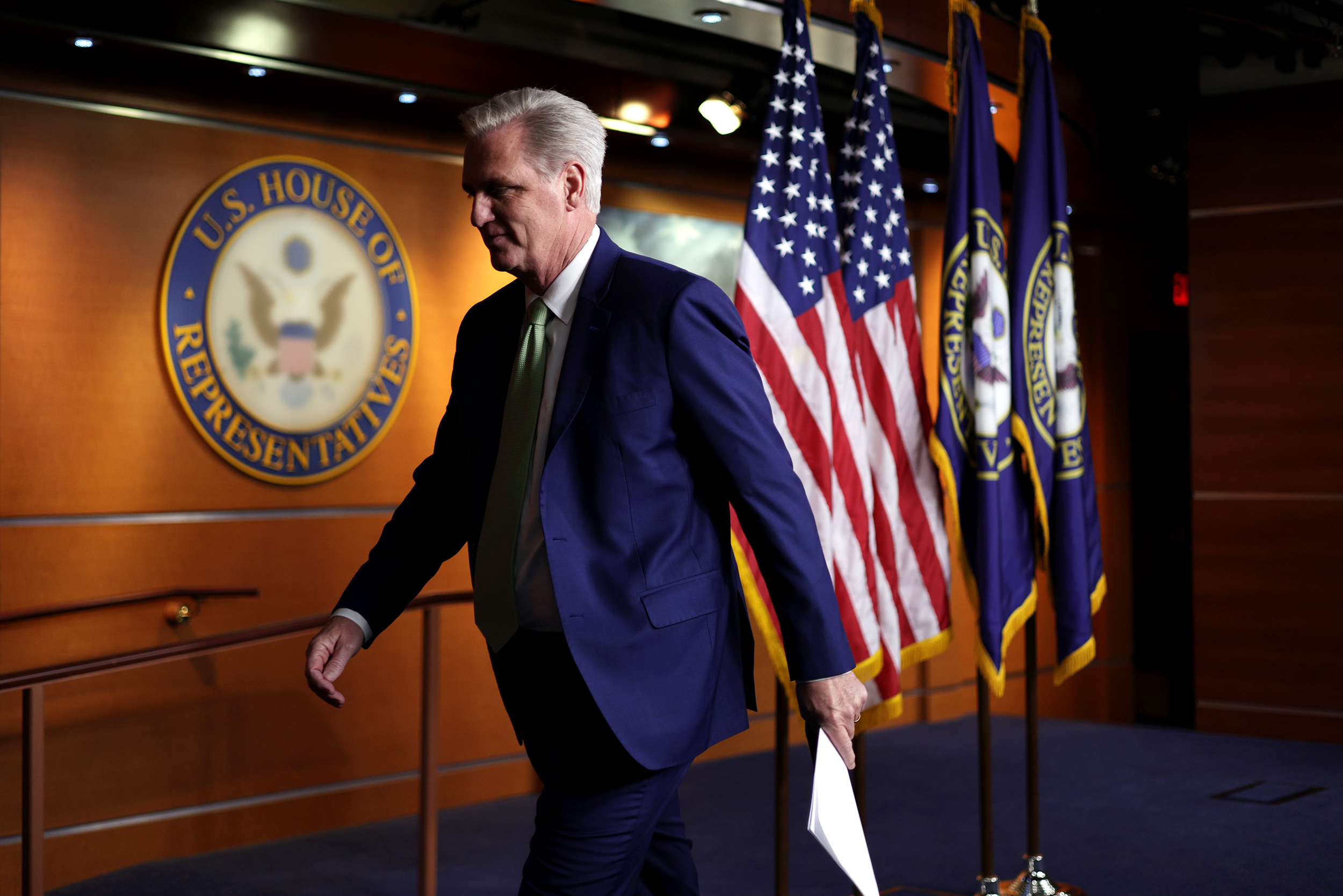
Kevin McCarthy, the House Republican leader, left a news conference at the U.S. Capitol on April 15.
Alex Wong/Getty Images
Four months after Jan. 6, Rep. Kevin McCarthy is still defending his support of President Trump’s bogus claims of a stolen election. But according to the N.Y. Times: “Friends say that he knows better and is as exasperated by Mr. Trump’s behavior as other top Republicans, but that he has made the calculation that the former president’s support is essential for his ambitions to become speaker after the 2022 elections, when Republicans have a decent chance to win back the House.”
2
The entrance of Caitlyn Jenner into the governor’s race on Friday set off a wave of chatter about whether she could mount a formidable challenge to Gov. Gavin Newsom. On Saturday, she offered a glimpse of her political chops with a tweet that criticized “Gavin’s District Attorneys” for “releasing dangerous criminals back on to our streets.” One problem: California governors don’t appoint district attorneys. They’re elected by voters. The pile-on was swift and gleeful. HuffPost | Newsweek
3
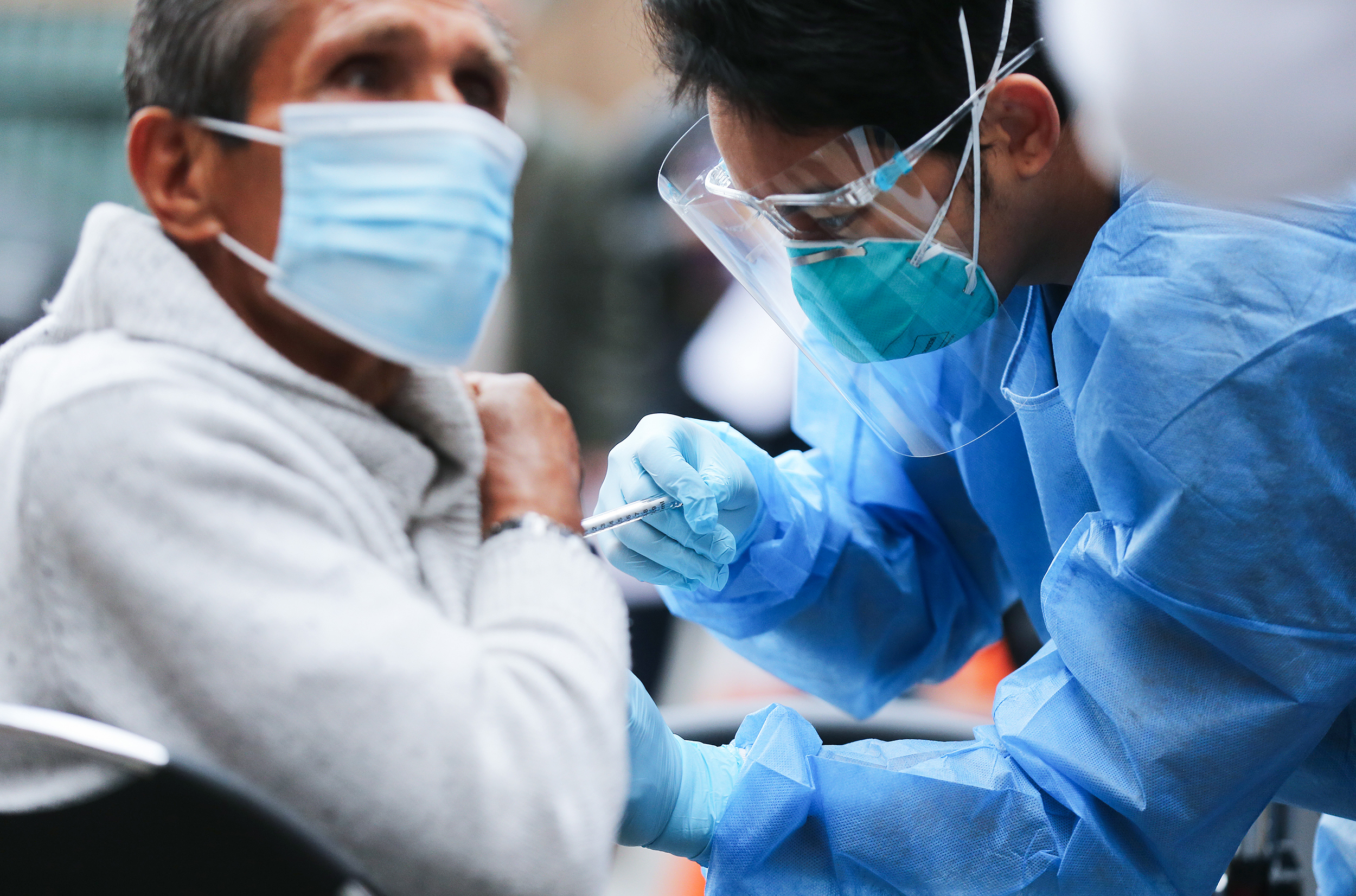
A health care worker administered a vaccine dose on Los Angeles’s skid row on Feb. 10.
Mario Tama/Getty Images
California and Texas took very different approaches to the pandemic and vaccination campaign. California trumpeted a reliance on science and policies aimed at improving social equity. Texas emphasized individual rights and protecting the economy. So which state has done a better job of inoculating highly vulnerable groups? Texas, by a significant margin. Kaiser Health News
Northern California
4
A San Francisco man accused of killing a 7-month-old boy in his care last week had recently been released without charges after twice being arrested on suspicion of domestic violence. The district attorney said the woman in those cases refused to cooperate, so he couldn’t file charges. That explanation infuriated some victim advocates. “No, no, no!” said a women’s shelter official. “Domestic violence is a crime against the state of California, and the district attorney’s job is to work with what the Police Department has gathered at the crime scene and develop the evidence to present a case. That’s his job — it’s not the victim’s job.” A column by Heather Knight. 👉 S.F. Chronicle
“Naked propaganda.” Knight’s column drew some sharp criticism from a civil rights lawyer and a criminal justice reporter. @equalityAlec | @TanaGaneva
5
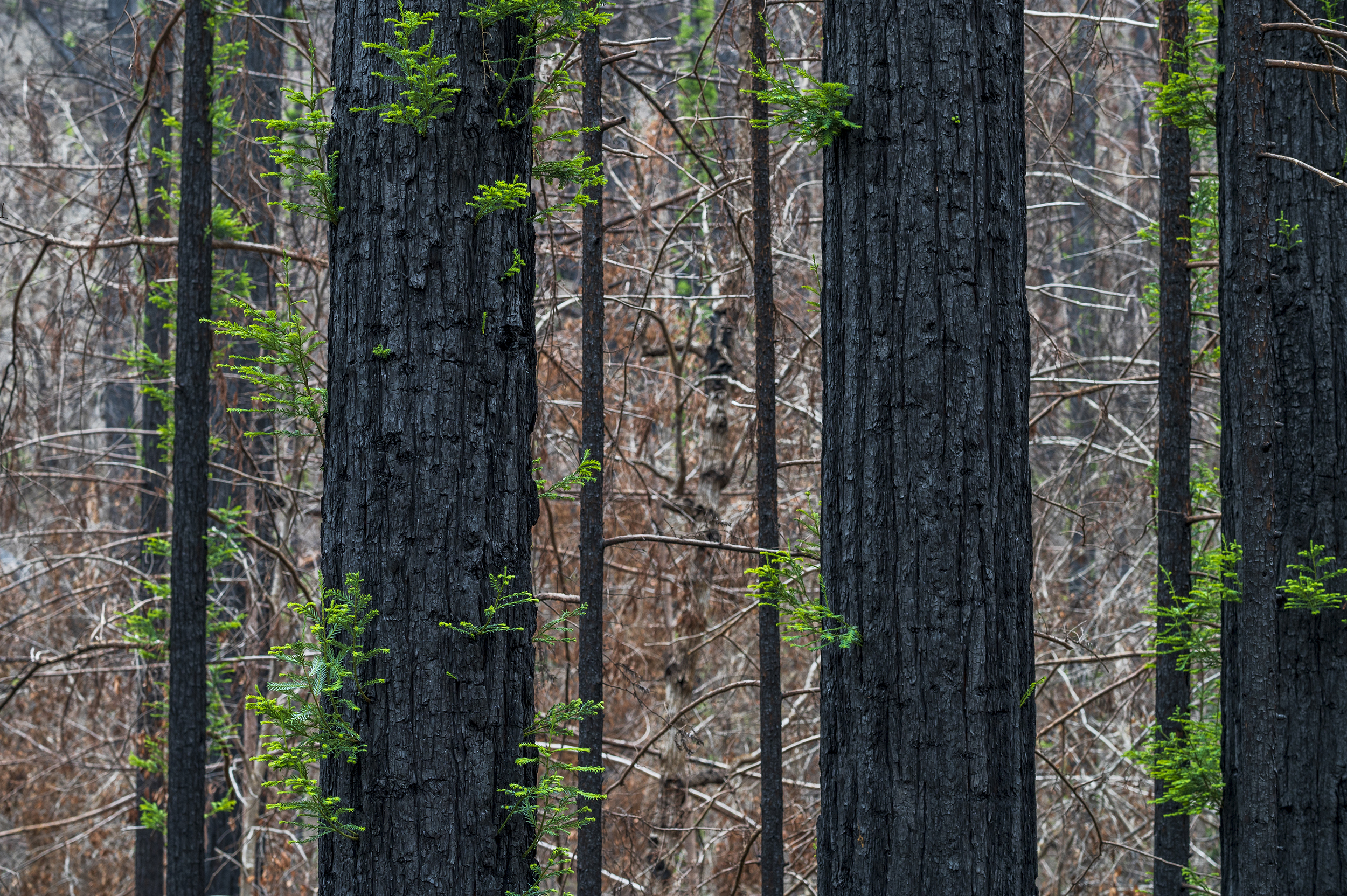
New growth was visible on burned trees at Big Basin Redwoods State Park last Friday.
Nic Coury/A.P.
The reporter Julie Cart got a rare tour of Big Basin Redwoods State Park eight months after it was ravaged by wildfire. She found redwoods still crowding the sky, blackened and stripped of limbs but with vivid green signs of regrowth. The state has estimated that Big Basin will take $186 million to repair. But that’s just the beginning. “We don’t know what it will look like,” said Chris Spohrer, a parks official. “But we do know the park is not going to look the same for a long time. It will not look the same in our lifetimes.” CalMatters
6
Drug overdoses skyrocketed in San Francisco last year, claiming 713 lives, more than double the number of people who died from the coronavirus. Many people think the city’s preoccupation with the pandemic has eclipsed concern about the urgency of the drug problem. “I can say for sure that what we are doing is not working and that it’s getting worse every single day,” said Matt Haney, a San Francisco supervisor. “I get offered drugs every time I step outside. It’s overwhelming.” N.Y. Times
7
After the George Floyd protests last summer, Berkeley formed a committee to evaluate the school district’s single campus police officer, with an eye toward eliminating the role. So board members were stunned when the panel — made up of students, administrators, and parents — delivered their report last week: They liked the officer and wanted to add another one. Berkeleyside
Southern California
8
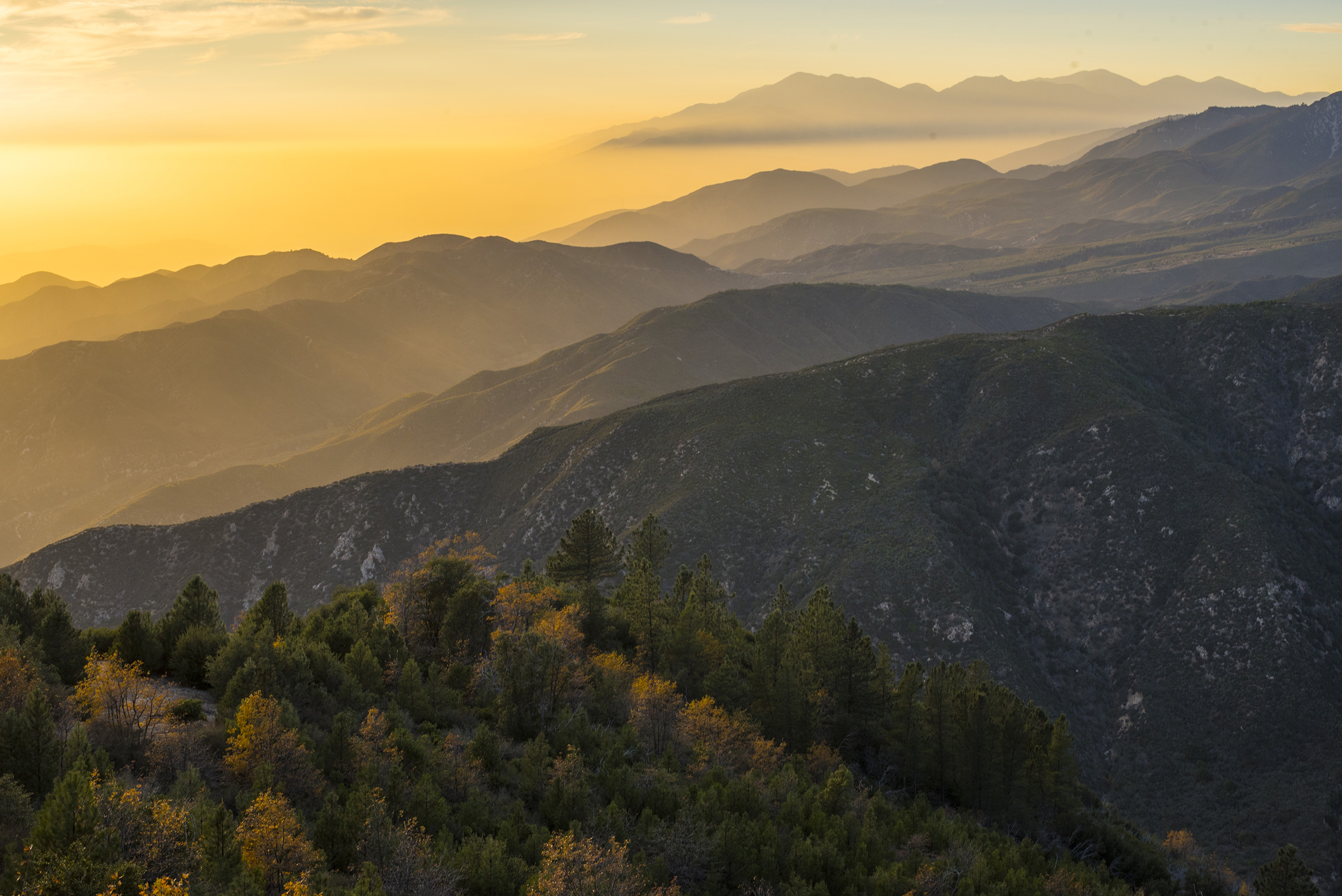
The San Bernardino Mountains.
Phillip Sunkel IV
For decades, activists have complained that Nestlé, the world’s largest bottled water company, has been allowed to siphon millions of gallons of water from national forest land east of Los Angeles. On Friday, state regulators ordered the company to stop, citing harm to a creek and wildlife that depends on it. Nestlé has said it’s entitled to every drop thanks to water rights inherited more than a century ago. A legal fight was all but certain. Desert Sun | San Joaquin Valley Sun
9
In January, three California women went to Tijuana to get some cosmetic work done. One died at the clinic, another had to be hospitalized for two weeks, and a third is on dialysis for kidney failure. Americans often go to Tijuana for discount medical services. But doctors warn that such bargain shopping can be risky. The woman who died, Keuana Weaver, of Long Beach, was 38 years old and a mother of two. Her family has been unable to get a full explanation of what happened. “I’m mostly sad this happened to my daughter because she was already so beautiful to me, inside and out,” her mother said. “She just couldn’t see it.” S.D. Union-Tribune
10
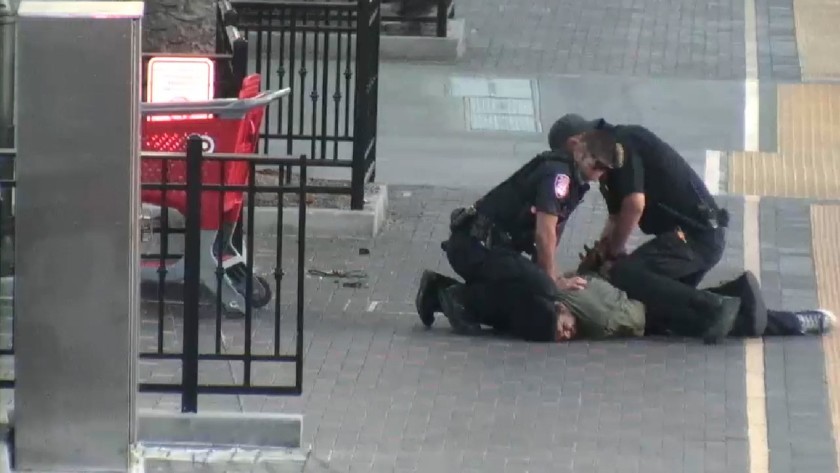
A security officer knelt on the neck of Angel Zapata Hernandez for several minutes on Oct. 15, 2019.
MTS, via S.D. Union Tribune
Months before the death of George Floyd, a 24-year-old man died while handcuffed and restrained by two transit security workers in San Diego. One of the officers knelt on his neck for six minutes and seven seconds. The death of Angel Zapata Hernandez, which like Floyd’s was captured on video in agonizing detail, was undisclosed until recently because the security agency was not covered by police transparency laws. S.D. Union Tribune | Newsweek
11
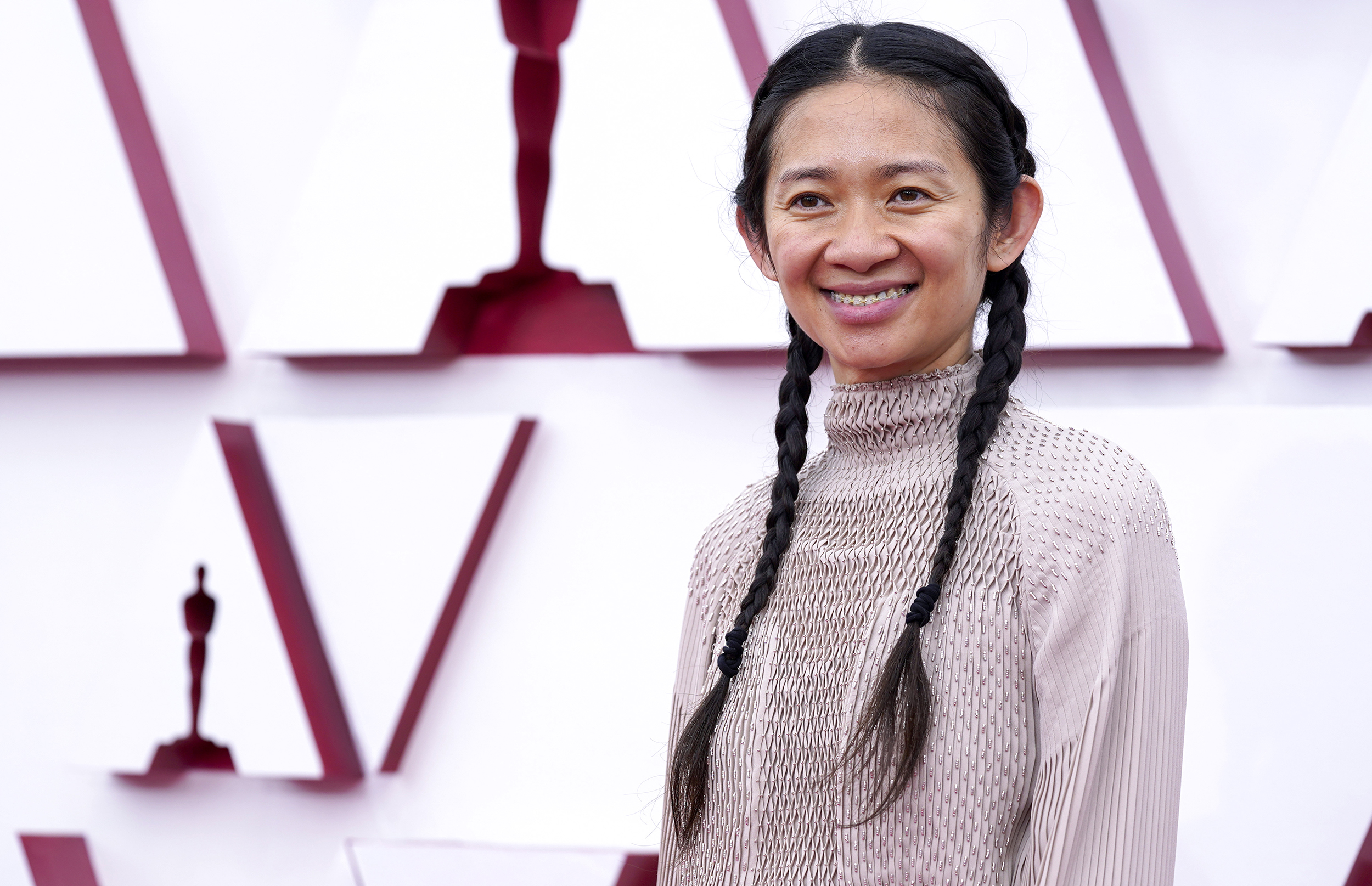
Chloé Zhao arrived for the 93rd Annual Academy Awards at Los Angeles’s Union Station on Sunday.
Chris Pizzello-Pool/Getty Images
Chloé Zhao’s “Nomadland,” a quiet portrait of itinerant lives in the American West, was the big winner at the Academy Awards on Sunday, collecting Oscars for best picture, director, and actress. Held at Union Station in Los Angeles, the ceremony amounted to a celebration of diversity. In 2015 and 2016, during the #OscarsSoWhite protests, all of the acting nominees were white. This year, nine out of 20 were people of color. L.A. Times | N.Y. Times | A.P.
Other memorable moments:
| • | In an emotional moment, Thomas Vinterberg, accepting the best foreign film award for “Another Round,” dedicated the film to his daughter, Ida, who was killed in a car crash in 2019. “So, Ida, this is a miracle that just happened,” he said, “and you’re a part of this miracle.” @ABC |
| • | In a major upset, Anthony Hopkins, 83, won the best actor Oscar for “The Father,” beating out the late Chadwick Boseman, who was the runaway favorite. Boseman fans were outraged. L.A. Times | N.Y. Post |
| • | And in a lighthearted moment, Daniel Kaluuya, winner of a best supporting actor Oscar, blurted out, “My mum met my dad. They had sex. It’s amazing!” His mother’s facial reaction was priceless. @jemelehill |
The full list of winners. 👉 Hollywood Reporter
Best looks from the Red Carpet. 👉 Washington Post
5 questions with …
12
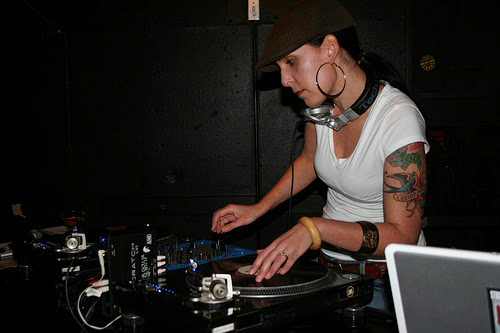
Felicia Angeja Viator.
Ross Viator
… Felicia Angeja Viator, a professor of history at San Francisco State University and former Bay Area DJ (as DJ Neta). Her recent book, “To Live and Defy in LA,” explores the rise of rap stars like Ice Cube and Dr. Dre who, in the late 1980s and early 90s, demanded that America confront an urban crisis too often ignored.
Q: What is one place everyone should visit in California?
A: Santa Cruz Beach Boardwalk, no question. I could list a thousand reasons to go, especially now that the rides are opening back up to the public, but here are three. First, the Giant Dipper is there. It’s one of the first ever all-wooden roller coasters, built in the early 1920s and still offering the same thrills from a century ago. You get that classic rickety sound and the jerky bumpiness of the wooden rails that might leave bruises on your back from the hard plastic seats. But it’ll be worth it, I swear. Second, the Boardwalk is the real-life backdrop for two iconic horror movies, “The Lost Boys” (Kiefer Sutherland as the leader of goth vampires) and “Us” (Jordan Peele’s 2019 film with tunnel people and a not-so-fun funhouse). You get to walk around a literal movie set. Third, the Boardwalk is exactly the kind of amusement park that guys like Walt Disney hated, because it was so wide open to everyone, it was full of frivolous fun, and it was a little chaotic. What better incentive to visit than to do something that would’ve made Walt Disney super uncomfortable?
What’s the best book you’ve read or podcast you’ve listened to recently?
I’ve been listening to the “Lost Hills” podcast series, which on the surface is about a bunch of mysterious shootings inside a state park in Malibu, California. But there are other layers to the story that the host Dana Goodyear (The New Yorker) unpacks, including some things about policing, the big divide between the haves and have-nots, and the holes in the precious mythologies of California. As a historian of California and a fan of true crime, it checks a lot of boxes for me.
What’s a hidden food gem in your area?
If you’re in San Francisco, especially if you venture to the south side of the city, you must hit up Lea and Andre at Excelsior Coffee. Classic Frisco vibe through and through, with nods to the culture of the Excelsior, classic cars, and motorcycle clubs. They have perfect coffee, no matter the package you like yours in. The cappuccinos are done right, and single-origin pourovers are on offer if you like to wait a bit for your coffee. I don’t, so I love that their drip coffee is just as floral and just as smooth. But you really go to Excelsior Coffee for the pastries, especially the ube (purple yam) ones — the ube donut, the ube flan, the ube cheesecake. Support local and small!
You’re organizing a dinner party. Which three California figures, dead or alive, do you invite, and why? How would you get the conversation started?
I’d want to sit down with three legendary Bay Area DJs who all died too young: Cameron Paul, Michael Erickson, and Pam the Funkstress. Your readers who are not Bay Area natives might not recognize these names. But for those of us who grew up in the Bay in the 1980s and 1990s, these three are legends in radio, in the clubs, in R&B and in Bay hip-hop. Cameron Paul helped introduce the West Coast, and really the whole nation, to Salt-N-Pepa in the 1980s, and he was a king in the Bay’s dance club scene. No one was better than Michael Erickson at blending records and telling a story with his DJ sets. And Pam, until the 2000s, was one of the only working female hip-hop DJs in America. She was the DJ for the Oakland rap group The Coup (with Boots Riley, now a filmmaker), and she dominated the Bay rap dance scene. They all influenced me to become a DJ in the 1990s, and the performance style I developed is really an amalgamation of theirs.
Because I think of these three as so central to the Bay Area music scene of a particular era, I’d love to get them to talk about the parties, venues, and crowds they remember best. And I’d love to hear them reflect back on the records that set the club on fire — the “secret weapons” they’d use to fill dancefloors.
Your book examines the emergence of gangsta rap in the 80s — in many ways, a response from Black communities to how mainstream culture in that era was leaving them behind or shutting them out. The genre has evolved in so many aspects since then, but some of the forces it was responding to have not changed much, if at all. In the last decade, who in West Coast hip-hop do you see as the most influential as far as taking up the mantle of that response?
Kendrick Lamar and Nipsey Hussle are the most obvious answers because they were born and raised in 1980s Los Angeles, the period I describe in my book. And they each pick up where early L.A. rappers left off, leveraging their commercial success to expose the nation to their own vision of America and its problems.
But Vince Staples might be a better answer, even if he’s more complicated as an artist and even if his music is more difficult to categorize. The thing that L.A. rappers of the 1980s and early 1990s earned was commercial success for hip-hop, and on their own terms, without compromise. They accomplished something for hip-hop as a genre that was really elusive for other artists who came before them, like Run-DMC and MC Hammer. It wasn’t until albums like Dr. Dre’s “The Chronic” and Ice Cube’s “The Predator” that hip-hop dominated the pop charts. These guys reverse-colonized popular music. This matters in a big way because they created space for Black artists — hip-hop artists, specifically — to take more creative risks, to be bolder, to take their music in whichever direction they dreamed, without being primarily concerned about white consumers.
On the West Coast, Vince Staples is a clear representation of that legacy in that he has not been creatively boxed in. In fact, though he would define himself as a rapper, and the production on a lot of his records has that minor-key, melodic, bass-heavy tone of a lot of the L.A. and Bay Area rap that came before him, his music resists categorization. He speaks on his local experiences and local culture, and he uses local Long Beach vernacular, which is all a direct lineage of West Coast rap’s focus on the local. And in his lyrics and his videos, he deals with many of the themes that early L.A. rappers explored: racist policing, gang life, dope boys, working-class struggles, and unrest. His music is also introspective, literary, and political in ways that may not be obvious to the casual listener but that resonate deeply with his fans. He is artistically and culturally defiant in all of these ways, and earned commercial success not in spite of that but because of that, which is why he is a direct descendant of the early West Coast rappers I write about in “To Live and Defy in LA.”
“5 questions with …” is a weekly feature by Finn Cohen, who edits the California Sun. Conversations are sometimes edited for brevity. Someone you’d like to see interviewed? Let him know: finn@californiasun.co.
Wake up to must-read news from around the Golden State delivered to your inbox each morning.